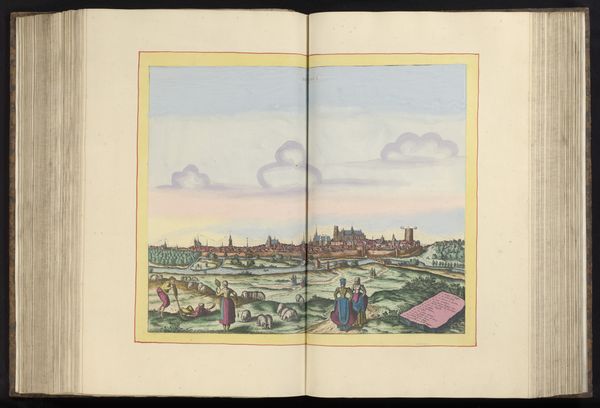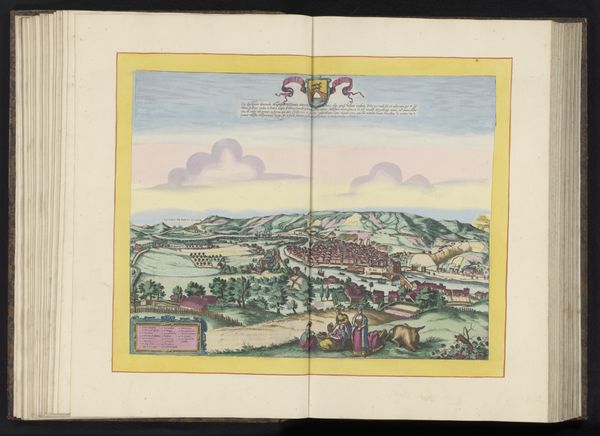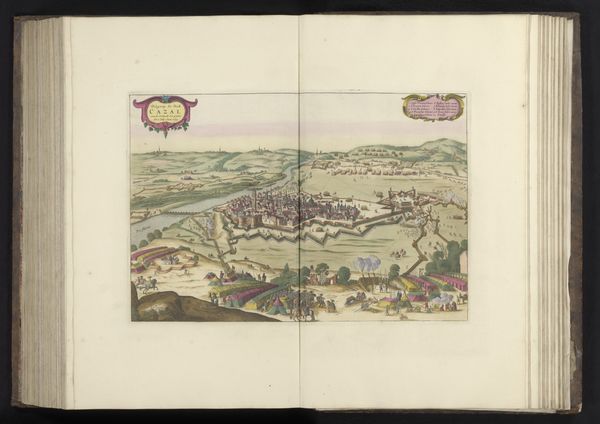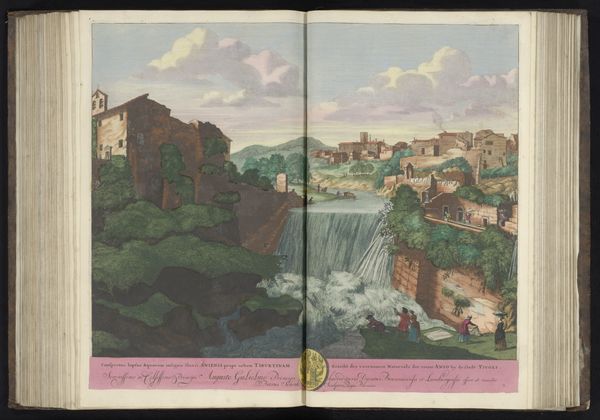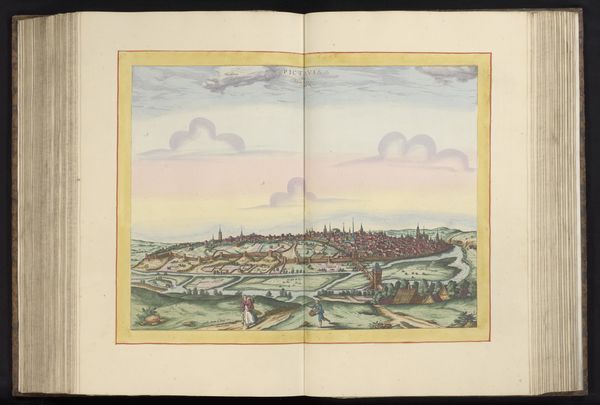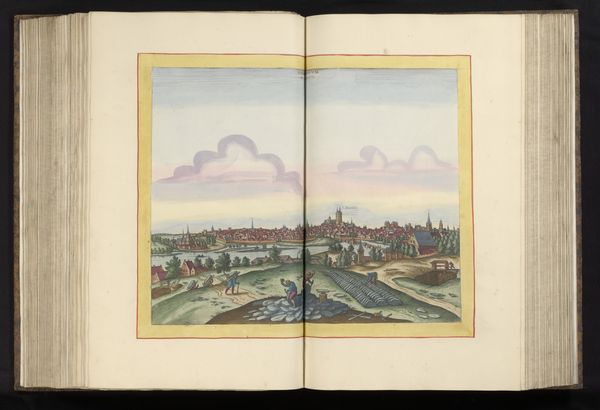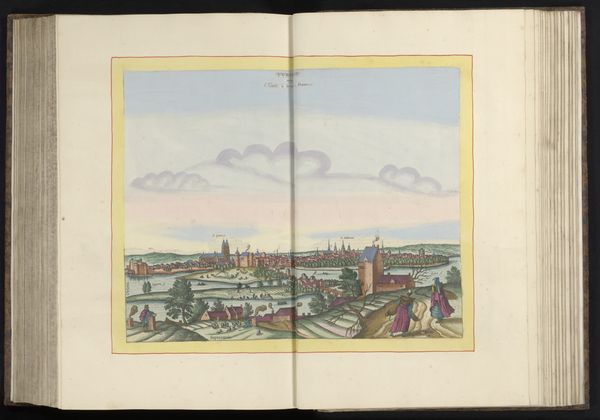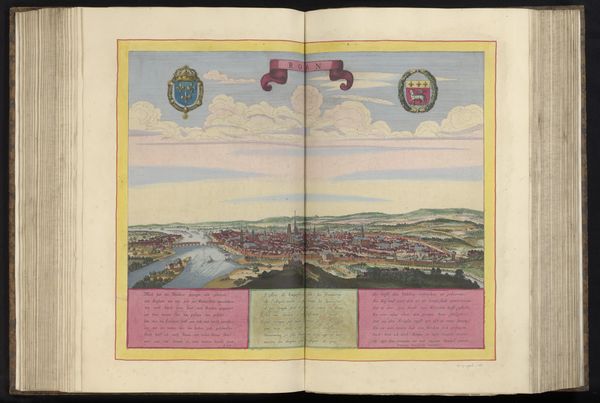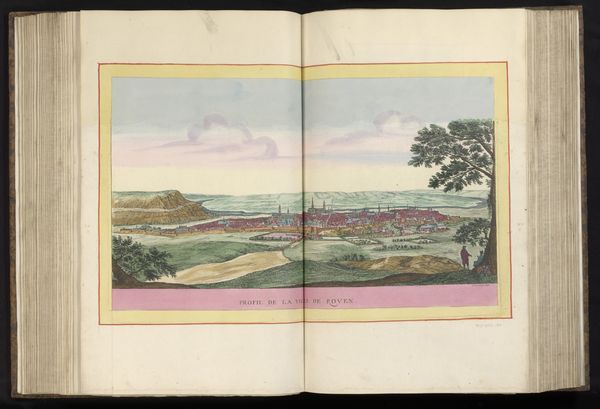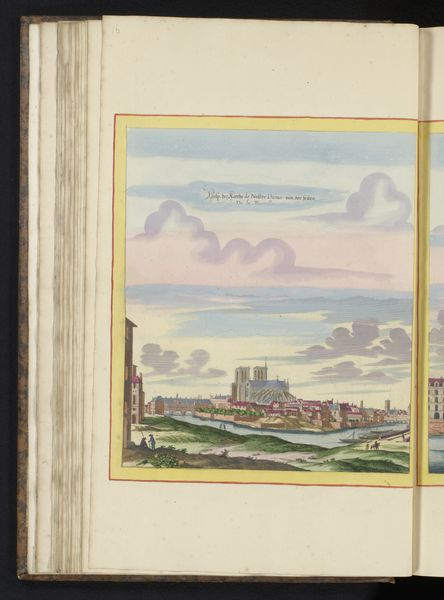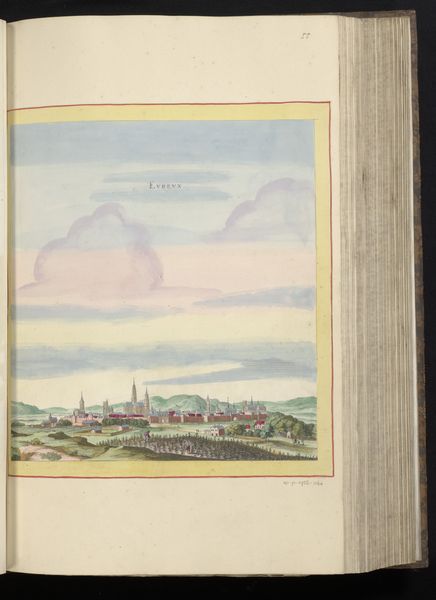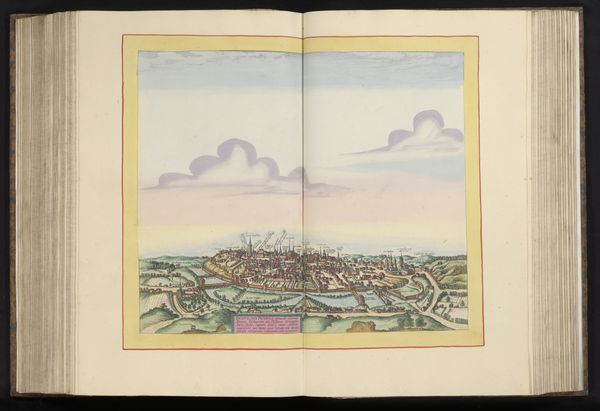
drawing, coloured-pencil, print, paper, ink
#
drawing
#
coloured-pencil
# print
#
landscape
#
perspective
#
paper
#
ink
#
coloured pencil
#
cityscape
#
academic-art
#
italian-renaissance
Dimensions: height 434 mm, width 435 mm
Copyright: Rijks Museum: Open Domain
Editor: Here we have an interesting find: Trinità dei Monti op de Monte Pincio te Rome, dating possibly from 1600 to 1717, by an anonymous artist. It's rendered in ink, coloured pencil, and print on paper. The whole composition strikes me as a bit staged, almost like a theater backdrop. What do you see in this piece? Curator: This cityscape offers a glimpse into Rome during a transformative period. How can we interpret the power dynamics represented in this image, with the Church looming over the domestic sphere? Think about how the city is rendered – the use of perspective to emphasize scale, for example. Do you think this view flattens or perhaps even idealizes Rome, especially considering the urban realities of the time? Editor: It does feel a bit idealized. Everything looks so orderly, and the colors are so soft. Was this meant to convey a sense of peace or power? Curator: Precisely. Power is embedded within seemingly neutral landscapes. Consider how this image might be complicit in constructing a particular narrative about Rome’s dominance – culturally, politically, religiously. Who had access to these kinds of images, and what messages were they intended to reinforce? Editor: That makes me think about who is included in the landscape itself - are those figures anonymous people, or are they supposed to represent something more? Curator: And importantly, who *isn’t* included? Whose stories are left out of this picturesque view? Understanding art means analyzing these absences just as carefully as the presences. Editor: I never thought of it that way. I was too caught up in the aesthetic beauty of the scene to really consider the social and political implications. Curator: It’s about questioning the narrative, isn’t it? Seeing beyond the surface to uncover the layers of meaning embedded within the artwork, engaging it within its context, and, importantly, questioning our own position. Editor: Well, I'll definitely carry a more critical lens moving forward, looking beyond just "beauty" to understand the power dynamics at play. Thanks for this shift in perspective!
Comments
No comments
Be the first to comment and join the conversation on the ultimate creative platform.
